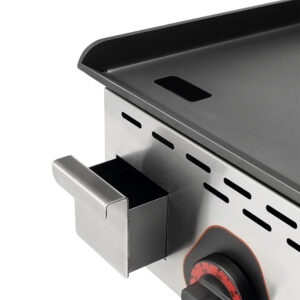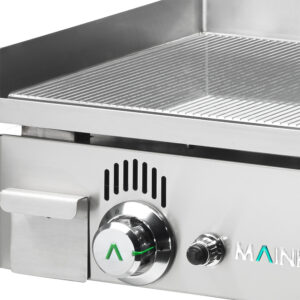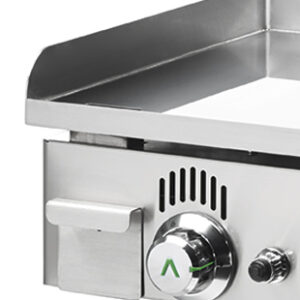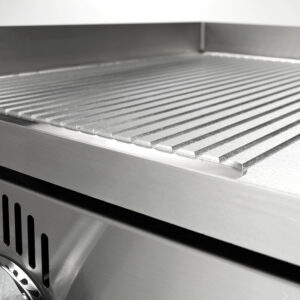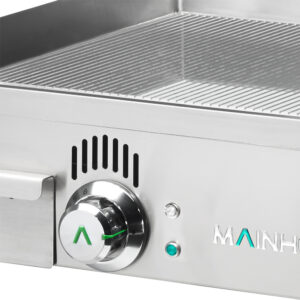Industrial griddles
Professional griddles for the hospitality sector
The selection of an industrial griddle for your kitchen should primarily depend on power, dimensions, and plate type.
Mainho’s industrial griddles are equipped with U-shaped burners with flames on both sides of the tube to ensure uniform heat distribution across the entire plate, preventing any loss of temperature in specific areas.
Our professional kitchen griddles, whether countertop or mounted, are constructed entirely from high-quality stainless steel and feature plates made of hard chrome, rectified steel, and blued iron.
You can also choose from various plate finishes: grooved, semi-grooved, and smooth.
At Mainho, we have been dedicated to manufacturing hospitality machinery since 1981. We offer high-quality heat solutions for all types of professional kitchens.
To explore more heating equipment for industrial kitchens, you can also visit our sections on:
FRY-TOPS BARBECUES SNACK MODULAR LINE WOK COOKERS
Industrial griddle range
Differences between an industrial griddle and a fry-top
1. The main difference between an industrial griddle and a fry-top lies in the thickness of the plate.
The plate of a griddle is thinner than that of a fry-top. This affects the speed at which the plate heats up and how long it maintains its temperature.
The griddle plate heats up faster than the fry-top. However, the fry-top retains heat for a longer period.
Mainho griddles have plate thicknesses ranging between 6 mm and 15 mm, depending on the material.
2. The surface area of the plate and power output differ between a griddle and a fry-top.
The surface area of an industrial griddle ranges from 30 cm x 50 cm to 100 cm x 44 cm, reaching a power output of up to nearly 15 kW (gas). A fry-top, on the other hand, operates at a power output starting from 11 kW (gas). Depending on your business needs, one may be more suitable than the other.
3. In fry-tops, the gas outlet is located at the rear of the plate. This allows the fry-top to be positioned next to other cooking equipment. In contrast, griddles require some additional space, as the gas outlet is located at the sides.

